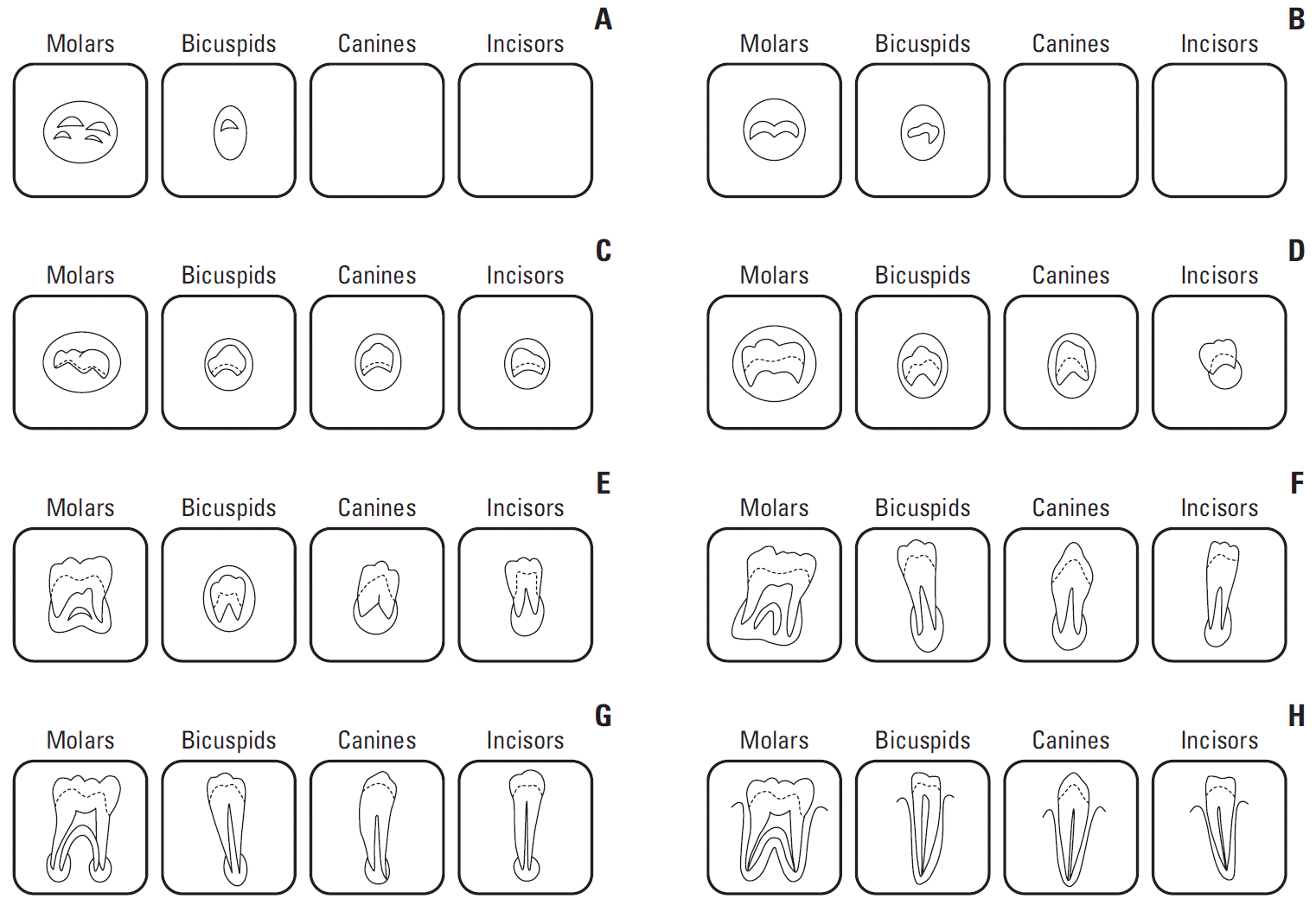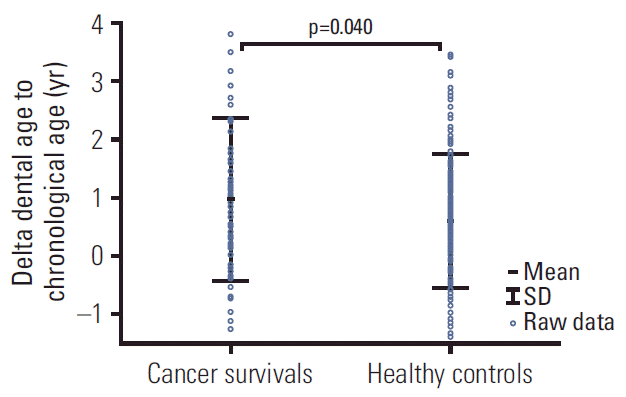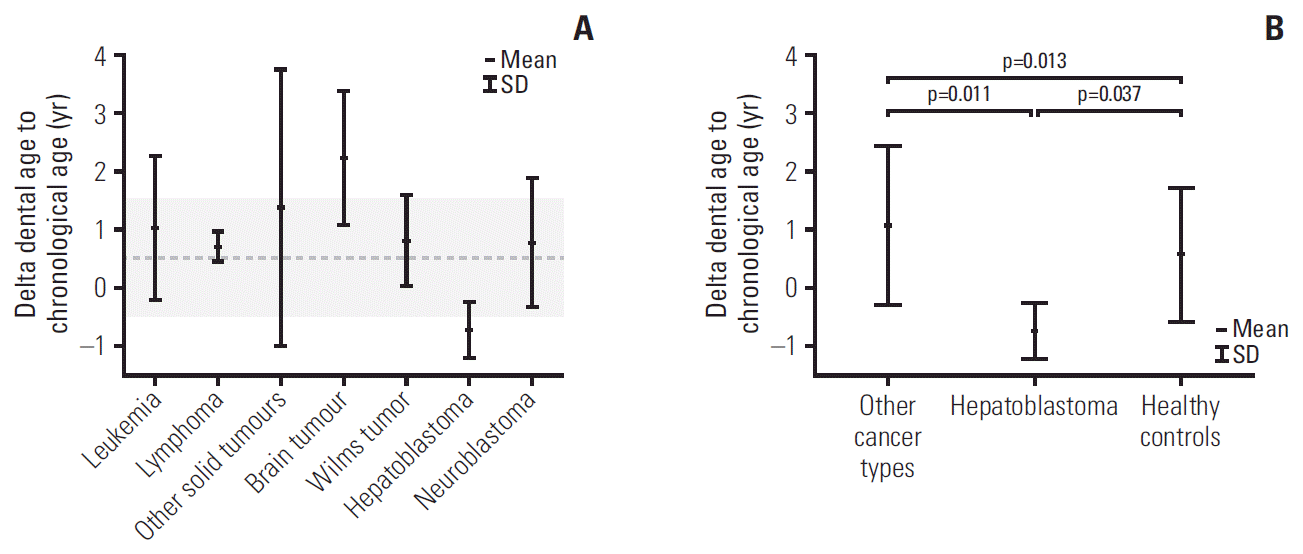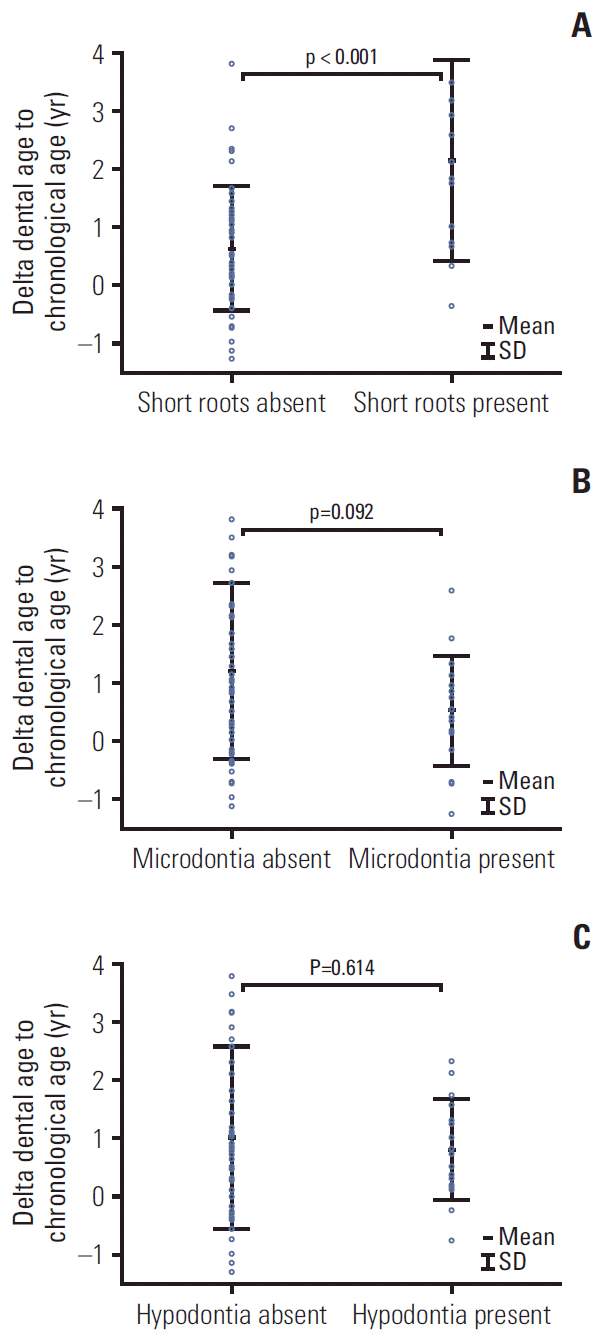1. Zubowska M, Wyka K, Fendler W, Mlynarski W, Zalewska-Szewczyk B. Interleukin 18 as a marker of chronic nephropathy in children after anticancer treatment. Dis Markers. 2013; 35:811–8.

2. Kang CM, Hahn SM, Kim HS, Lyu CJ, Lee JH, Lee J, et al. Clinical risk factors influencing dental developmental disturbances in childhood cancer survivors. Cancer Res Treat. 2018; 50:926–35.

3. Proc P, Szczepanska J, Skiba A, Zubowska M, Fendler W, Mlynarski W. Dental anomalies as late sdverse rffect among young children treated for cancer. Cancer Res Treat. 2016; 48:658–67.
4. Kawakami T, Nakamura Y, Karibe H. Cyclophosphamide-induced morphological changes in dental root development of ICR mice. PLoS One. 2015; 10:e0133256.

5. Kaste SC, Goodman P, Leisenring W, Stovall M, Hayashi RJ, Yeazel M, et al. Impact of radiation and chemotherapy on risk of dental abnormalities: a report from the Childhood Cancer Survivor Study. Cancer. 2009; 115:5817–27.
6. Avery JK, Steele PF, Avery N. Oral development and histology. 3rd ed. Stuttgart: Thieme;2002.
7. Demirjian A, Goldstein H, Tanner JM. A new system of dental age assessment. Hum Biol. 1973; 45:211–27.
8. Holtta P, Alaluusua S, Saarinen-Pihkala UM, Peltola J, Hovi L. Agenesis and microdontia of permanent teeth as late adverse effects after stem cell transplantation in young children. Cancer. 2005; 103:181–90.

9. Holtta P, Hovi L, Saarinen-Pihkala UM, Peltola J, Alaluusua S. Disturbed root development of permanent teeth after pediatric stem cell transplantation. Dental root development after SCT. Cancer. 2005; 103:1484–93.
10. Martin MB, Li CS, Rowland CC, Howard SC, Kaste SC. Correlation of bone age, dental age, and chronological age in survivors of childhood acute lymphoblastic leukaemia. Int J Paediatr Dent. 2008; 18:217–23.

11. van der Pas-van Voskuilen IG, Veerkamp JS, Raber-Durlacher JE, Bresters D, van Wijk AJ, Barasch A, et al. Long-term adverse effects of hematopoietic stem cell transplantation on dental development in children. Support Care Cancer. 2009; 17:1169–75.

12. Flores AP, Monti CF, Brunotto M. Dental and chronological age in children under oncological treatment. J Forensic Sci. 2015; 60:453–6.

13. Tomas LF, Monico LS, Tomas I, Varela-Patino P, Martin-Biedma B. The accuracy of estimating chronological age from Demirjian and Nolla methods in a Portuguese and Spanish sample. BMC Oral Health. 2014; 14:160.

14. Rozylo-Kalinowska I, Kiworkowa-Raczkowska E, Kalinowski P. Dental age in Central Poland. Forensic Sci Int. 2008; 174:207–16.
15. Sobieska E, Fester A, Nieborak M, Zadurska M. Assessment of the dental age of children in the Polish population with comparison of the Demirjian and the Willems methods. Med Sci Monit. 2018; 24:8315–21.

16. Chudasama PN, Roberts GJ, Lucas VS. Dental age assessment (DAA): a study of a Caucasian population at the 13 year threshold. J Forensic Leg Med. 2012; 19:22–8.

17. Esan TA, Schepartz LA. The timing of permanent tooth development in a Black Southern African population using the Demirjian method. Int J Legal Med. 2019; 133:257–68.

18. Wang J, Bai X, Wang M, Zhou Z, Bian X, Qiu C, et al. Applicability and accuracy of Demirjian and Willems methods in a population of Eastern Chinese subadults. Forensic Sci Int. 2018; 292:90–6.

19. Jayaraman J, Roberts GJ. Comparison of dental maturation in Hong Kong Chinese and United Kingdom Caucasian populations. Forensic Sci Int. 2018; 292:61–70.

20. Chehab DA, Tanbonliong T, Peyser J, Udin R. Association between body mass index and dental age in Hispanic children. Gen Dent. 2017; 65:54–8.
21. Hashim HA, Mansoor H, Mohamed MH. Assessment of skeletal age using hand-wrist radiographs following Bjork system. J Int Soc Prev Community Dent. 2018; 8:482–7.
22. Ferrandez A, Carrascosa A, Audi L, Baguer L, Rueda C, Bosch-Castane J, et al. Longitudinal pubertal growth according to age at pubertal growth spurt onset: data from a Spanish study including 458 children (223 boys and 235 girls). J Pediatr Endocrinol Metab. 2009; 22:715–26.

23. Brinksma A, Roodbol PF, Sulkers E, Kamps WA, de Bont ES, Boot AM, et al. Changes in nutritional status in childhood cancer patients: a prospective cohort study. Clin Nutr. 2015; 34:66–73.

24. Paulsson L, Arvini S, Bergstrom N, Klingberg G, Lindh C. The impact of premature birth on dental maturation in the permanent dentition. Clin Oral Investig. 2019; 23:855–61.

25. Giardiello FM, Petersen GM, Brensinger JD, Luce MC, Cayouette MC, Bacon J, et al. Hepatoblastoma and APC gene mutation in familial adenomatous polyposis. Gut. 1996; 39:867–9.

26. Lubinsky M, Kantaputra PN. Syndromes with supernumerary teeth. Am J Med Genet A. 2016; 170:2611–6.

27. Basaran G, Erkan M. One of the rarest syndromes in dentistry: gardner syndrome. Eur J Dent. 2008; 2:208–12.

28. Ruiz-Mealin EV, Parekh S, Jones SP, Moles DR, Gill DS. Radiographic study of delayed tooth development in patients with dental agenesis. Am J Orthod Dentofacial Orthop. 2012; 141:307–14.






 PDF
PDF Citation
Citation Print
Print





 XML Download
XML Download